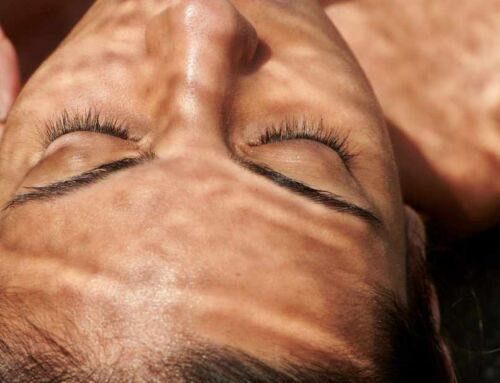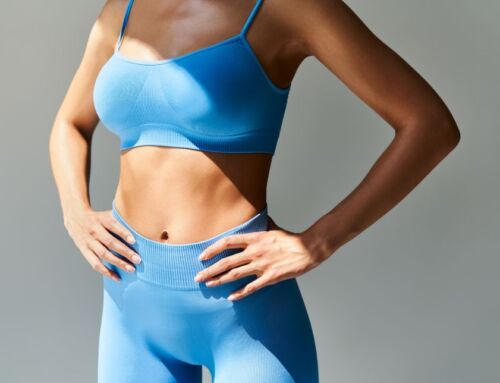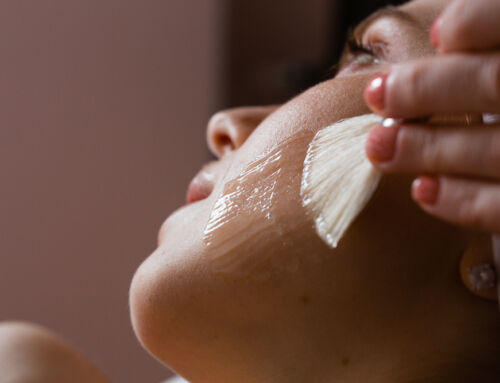PRP facial treatments
PRP facial treatments, or “vampire facials” are an extremely popular anti-aging treatment. The Platelet-rich plasma (PRP) facial rejuvenation uses your own blood to promote collagen production and trigger growth factors.
The groundbreaking solution for aging or damaged skin pairs microneedling with a plasma “serum,” leaving skin looking younger, smoother, and overall healthier.
What is a PRP treatment?
PRP, or platelet-rich plasma, is a mixture of the patient’s own blood plasma with a high concentration of platelets. Platelets naturally circulate in the blood and help blood to clot as well as release growth factors and proteins that promote healing. PRP injections are great for healing injuries, and have been used in sports medicine for years.
Today, PRP treatments are used to heal tendon, ligament, muscle, and joint injuries, as well as osteoarthritis, post-surgical healing, hair restoration, and skin care.
What is a PRP facial treatment?
A PRP facial treatment is a more natural cosmetic treatment that involves injecting platelet-rich plasma (PRP) into the face. PRP promotes healing on a cellular level. When injected into the skin, PRP can help improve texture and tone, reduce wrinkles, and encourage new collagen growth.
How does PRP work?
Our blood contains plasma, red blood cells, white blood cells, and platelets. Plasma is the liquid part of our blood and is made up of water and proteins; plasma also helps blood cells, white blood cells, and platelets to move through the body. Platelets help our blood clot and produce growth factor proteins essential for healing.
PRP facial rejuvenation uses a concentration of platelets and plasma from your blood to help heal and renew your skin. The growth factors in platelets are critical for our skin to keep it looking plump & full of elastin.
To start this process, a medical professional will draw a small vial of blood from you. Then they will place the vial in a centrifuge to separate the platelet-rich plasma (PRP) from the red and white blood cells. This process concentrates the platelets and increases the count many times higher than usual, and the result is impressive. From there, it is ready to address skin concerns.
Your practitioner can either apply the PRP solution topically like a serum, use it in combination with microneedling for better absorption, or inject it into the face similar to other injectables like Botox or filler.
PRP Healing Process
PRP treatments heal and restore in three phases:
Once injected, the first phase (inflammation) begins, followed by the second (proliferation) and third (remodeling) phases, which occur naturally.
- Inflammation – The injection first triggers inflammation. During this phase, the body sends macrophage cells to the area to clean up debris and damaged tissue. These cells react as if there were a new injury, causing controlled inflammation and increasing blood flow.
- Proliferation – In this phase, the body starts repairing and healing. Fibroblasts, which are crucial repair cells that injured or degenerated tissues lack, gather at the injection sites. Over four to six weeks, these fibroblasts multiply and produce collagen, which is a strong and relatively inelastic substance. Collagen helps to thicken, densify, and strengthen the tissue.
- Remodeling – Lastly, the new, fortified tissue continues to mature over one to three years, which means the injection site gradually improves up to three years after the treatment.
Who is a Good Candidate?
One of the best things about PRP facial rejuvenation is that almost any man or woman can be considered a great candidate for the procedure. This process is effective for all skin types and ages. PRP facial rejuvenation is an excellent treatment option for individuals just starting to explore anti-aging and skin rejuvenation. Additionally, PRP facials are great for people looking to maintain healthy skin or enhance it before a big event.
Before you begin the process, we will review all your questions and concerns to ensure PRP facial rejuvenation is a good fit for you.
Is PRP Painful?
Pain during a PRP facial treatment with microneedling can vary depending on your individual pain tolerance. Microneedling is generally well-tolerated, but some patients might experience mild discomfort or a sensation similar to light sunburn during the procedure. If you experience intolerable pain, tell your practitioner immediately.
How Often Should I Get PRP Face Treatments?
We recommend getting PRP injections for at least three months for the best treatment results. Most people see results after three treatments. But, of course, this may vary depending on how well your skin responds to the platelet-rich plasma injections.
Are PRP Skin Treatment Results Permanent?
Technically, no. But after completing an entire treatment plan and with proper aftercare, you should see results for up to three years.
What Should You Do After a PRP Facial?
After a PRP facial, you can expect some degree of redness, swelling, and minor skin sensitivity. These effects are usually temporary and should go away in a few days. You may want to avoid intense activity or sun exposure for about 2-3 days post-treatment, allowing any redness or swelling to diminish. Makeup should be avoided immediately after the procedure, and it’s recommended to follow the post-treatment care instructions provided by the medical professional. Instructions may include:
-
- Avoid touching your face for at least 6 hours.
- Avoid applying makeup on your face until the next day.
- Take special care not to irritate your skin by touching it. If you need to touch your face, wash your hands with soap and water.
- Don’t rub the skin, especially when washing and drying your face.
- Use pain relievers like ibuprofen and acetaminophen to reduce any discomfort after the treatment. Especially if you notice pain or swelling lasting longer than 24 hours.
- You can apply cold compresses wrapped in a clean, dry towel to help reduce swelling and discomfort as well.
- Plan to sleep on your back with your face slightly elevated for at least two days after your treatment.
- You should also avoid using exfoliating facial cleansers for about three days or 72 hours.
How do I maintain my PRP facial results?
Following your aftercare instructions and regular skincare routine will help you see optimal results about three months after the initial treatment.
After that, you can schedule additional PRP facial treatments, with or without microneedling, to keep renewing your results. What’s excellent about PRP treatments is that since they use your body’s healing factors, you can schedule repeat treatments as soon as you notice your results fading.
How much does a PRP treatment cost?
The cost of PRP treatments can vary based on factors such as the geographical location, the expertise of the medical practitioner, the extent of the treatment area, and the number of sessions required. We advise patients to schedule a consultation to discuss your specific goals and receive a personalized treatment plan, including an estimate of the associated costs. While the initial investment might vary, many patients find that the long-lasting results and benefits of the procedure make it a valuable investment in their skin health and appearance.
What are the benefits ofreasons to consider a PRP 'vampire facial'?
The Skincare Showdown
PRP, IPL, and Microneedling Explained
As the skincare industry continues to evolve, innovative treatments promising radiant, youthful skin are constantly emerging. Among the most talked-about procedures are Platelet-Rich Plasma (PRP) therapy, Intense Pulsed Light (IPL) treatments, and microneedling. Each has its unique method and benefits, but choosing the right one can be overwhelming. Let’s dive into the details of PRP, IPL, and microneedling to help you decide which might be best for your skin needs.
PRP (Platelet-Rich Plasma) Therapy
What is it? PRP therapy involves extracting a small amount of your blood, processing it to enrich the plasma with platelets, and then injecting it back into your skin. Platelets are rich in growth factors that stimulate cell turnover, collagen production, and tissue regeneration.
Best For:
- Reducing fine lines and wrinkles
- Treating scars, including acne scars
- Improving overall skin texture and tone
- Hair loss treatments
Pros:
- Utilizes natural elements from your own body, reducing the risk of allergic reactions.
- Targets deeper layers of the skin for long-term rejuvenation.
Cons:
- Involves needles and blood, which might not be suitable for the squeamish.
- Results take time to manifest as the skin needs to regenerate.
IPL (Intense Pulsed Light) Treatments
What is it? IPL treatments use broad-spectrum light to target various skin issues. The light energy is absorbed by specific skin components, such as melanin or blood vessels, and converted into heat, which damages the target cells while sparing surrounding tissues.
Best For:
- Diminishing sun spots, age spots, and hyperpigmentation
- Reducing the appearance of rosacea and broken capillaries
- Minor skin tightening effects
Pros:
- Non-invasive with minimal downtime.
- Quick treatment sessions, usually about 20-30 minutes.
- Visible results for pigmentation and vascular issues.
Cons:
- Not suitable for all skin types, particularly darker skin tones.
- Multiple sessions are often required for optimal results.
Microneedling
What is it? Microneedling involves using a device equipped with small needles to create micro-punctures in the skin. This process triggers the body’s wound healing response, promoting collagen production and cellular renewal.
Best For:
- Enhancing skin texture and firmness
- Reducing scars, including acne and surgical scars
- Minimizing pores and stretch marks
- Improving the efficacy of topical treatments
Pros:
- Suitable for all skin types.
- Enhances absorption of skincare products.
- Can be combined with other treatments like PRP for amplified effects.
Cons:
- Can lead to temporary redness, swelling, and irritation.
- Requires multiple sessions for best results.
Which Treatment Should You Choose?
The choice between PRP, IPL, and microneedling depends on your specific skin concerns, skin type, and desired results:
- For texture and rejuvenation: PRP and microneedling are excellent for those looking to improve skin texture and stimulate collagen for a more youthful appearance.
- For pigmentation and vascular lesions: IPL is the preferred choice for effectively reducing pigmentation issues and visible small blood vessels.
- Combining treatments: Sometimes, combining treatments (like microneedling with PRP) can provide comprehensive benefits, offering both the rejuvenation effects of PRP and the enhanced collagen production stimulated by microneedling.
Consult with a dermatologist or a skincare specialist who can assess your skin’s condition and recommend the most appropriate treatment plan. Remember, the best treatment is one that is tailored to your individual skin needs and goals.
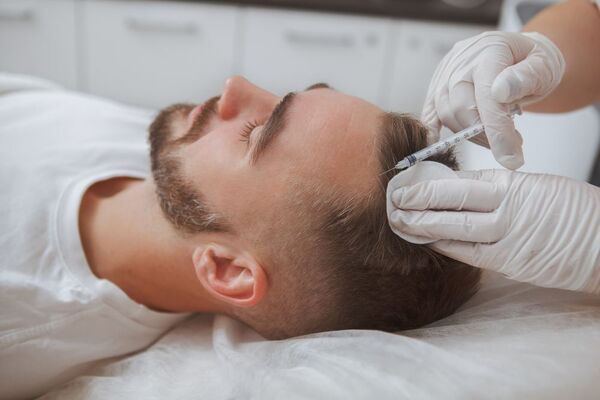
Is PRP better than botox?
It depends on what you want from your aesthetic or cosmetic treatments. For example, Botox best prevents fine lines, wrinkles, dynamic wrinkles, and other minor signs of aging. However, PRP facial rejuvenation treatments work best for patients looking for ways to naturally increase collagen production and improve the overall quality of their skin.
Botox injections work well to relax and inhibit the nerves that cause dynamic wrinkles on your face. But PRP injections will help your cells reactivate and restore your skin’s natural layers of collagen, elastin, and more.
Some patients combine PRP treatments with Botox injections in the same treatment session. The two-in-one gives powerful anti-aging results.
Is PRP better than microneedling?
Microneedling is a minimally invasive cosmetic procedure that involves the use of a device with fine needles to create controlled micro-injuries on the skin’s surface. These micro-injuries stimulate the skin’s natural healing processes, prompting the production of collagen and elastin, which are essential components that contribute to the skin’s firmness, elasticity, and overall texture. As a result, microneedling is often used to address a range of skin concerns, including fine lines, wrinkles, scars, and uneven skin tone.
Think of PRP as an add-on to microneedling. When combined with PRP treatment, microneedling helps enhance the absorption of platelet-rich plasma, promoting greater rejuvenation and healing. Platelet-rich plasma (PRP) injections work even better when combined with a tried and true technique like microneedling.
Can A Vampire Facial Make You Look Younger?
The short answer is yes! However, the results can vary significantly from patient to patient because it uses your body’s natural wound healing abilities.
Is Platelet-Rich Plasma The Secret To Younger-Looking Skin?
I wouldn’t say it’s the secret to younger-looking skin, but PRP treatments create undeniable results.
When the platelet-rich plasma is injected into the skin, the injection “wounds” stimulate the body’s collagen production and add natural growth factors to boost your body’s healing process further.
Platelet-rich plasma, or PRP, is currently hailed as the secret to bright and youthful skin. It allows patients to turn back the proverbial hands of time on their skin. From erasing fine lines and other superficial creases to addressing signs of sun damage, there is very little that a PRP treatment cannot do to improve the texture and overall tone of the skin.
Suppose you’ve noticed the early signs of facial aging and are eager to regain a taut, healthy, resilient, and undeniably youthful complexion. In that case, you owe it to yourself to learn more about this procedure.
Why Is Collagen So Important?
Collagen is a protein like a latticework in your skin that provides structure in the different layers of your skin. Additionally, this protein makes up your nails and hair.
When the collagen breaks down in your skin, you develop lines and wrinkles. Typically, your collagen production will begin to slow down around the age of 25. After that, you’ll see more fine lines and wrinkles on your skin. For women, after they go through menopause, their natural collagen production slows down even more.
What is PRP, and why is it so effective?
Over the past several years, platelet-rich plasma has earned acclaim throughout the cosmetic industry due to its impressive restorative capabilities. From aiding in some of the world’s most effective hair loss reversal treatments to creating firmer and more resilient skin, this naturally-derived solution is worth considering. It reduces the turnover rate for new skin cells so that the dermis constantly refreshes and renews itself, just like it did when the body was younger.
PRP contains every one of the growth hormones for triggering increased collagen production and the regeneration of skin tissues. It also promotes better cell differentiation, promoting brighter and more vibrant skin overall. PRP treatment can provide impressive benefits for a dull, tired complexion caused by overwork, physical and emotional stress, and everyday wear and tear.
How is Platelet-Rich-Plasma sourced?
Using blood or blood-derived products to restore your skin’s health and former vitality may make you feel odd. However, PRP treatment for smoother skin always uses platelet-rich plasma obtained from the patient’s blood. This procedure eliminates several obvious health risks while making consumers feel much more comfortable pursuing this treatment.
Is PRP Safe?
Garza patient safety and hygiene are paramount during PRP treatments. We adhere to strict sterilization protocols to prevent any risk of infection or contamination. Equipment, tools, and surfaces are thoroughly sanitized before each procedure. Additionally, since the procedure involves drawing the patient’s blood, proper handling, storage, and processing are essential to prevent any complications. By following meticulous sterilization and safety procedures, we ensure you a safe treatment experience.
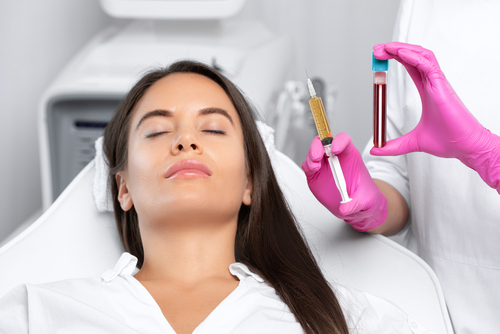
How long do PRP injections last in the face?
PRP facial results typically last between 6-12 months.
However, it’s important to note that your specific skin type will influence the longevity of your results. At the very least, you should experience results, especially after your first treatment, for around 6 to 12 months. The results of a PRP facial are typically visible within a few weeks and continue to improve over time.
For the longest-lasting results, you should work with Dr. Garza and Tracey to create a regimented skin care plan that may include multiple PRP facial treatments to help maintain your results. But, of course, your lifestyle, age, genetics, and other factors will also play into how good your results are and how long they’ll last.
How long does it take for the results to show?
One significant benefit of choosing PRP treatment for smoother skin is the ability to avoid a lengthy recovery time. There isn’t a lot of downtime with this procedure, given that only a very modest amount of blood is drawn to retrieve the necessary PRP and that the injection of the PRP is a simple and easy process.
It is important to note that PRP treatment patients often experience improvements in different facial issues at differing times. For instance, sunspots and dark spots can fade or disappear in as little as two to three months, whereas dull and dry skin may look revitalized within just a few days. Therefore, during your initial appointment, the provider can estimate the required length of treatment, the necessary number of sessions, and the approximate duration of your PRP results.
See an experienced professional like Dr. Garza for an optimal treatment plan customized to your skin’s needs.

What do PRP face treatments do?
PRP uses your body’s regenerative properties to help reproduce healthier, younger-looking skin. With PRP, your blood is drawn and placed into a machine that spins it down into what’s referred to as “liquid gold.” It’s then re-applied to your skin or scalp if you’re being treated for hair loss by injecting small amounts into the desired area. So, I’m sure that you can imagine an “ouch” may be in order.
The good news at our clinic is that we offer Pro-Nox as an option for any of our patients to help alleviate any anxiety or pain associated with our aesthetic treatments – so you never have to worry! However, because of the discomfort with PRP injections and the efficacy of its results, other options have become available that make a lot of sense for a majority of our patients.
What can PRP do for aging skin on the face?
Generally speaking, the more advanced facial aging is, the more advanced and invasive the treatment must be to achieve desired results. Nevertheless, PRP therapy is an effective solution for various superficial skin issues. It can also effectively minimize the appearance of discolored, dark, and deep acne scars.
What it will not do, however, is significantly tighten excessively loose or sagging skin. On the other hand, with noticeable increases in collagen production, multiple sessions may restore a look of vitality and health to severely aged skin. Still, other skin tightening treatments might be recommended.
Can PRP treatments be paired with other aesthetic treatments?
PRP treatment can effectively address a variety of common cosmetic concerns. However, there are times when this procedure can be made significantly more effective by pairing it with other treatments. The timing of combined treatments can be different for every individual. However, with the right combination of non-surgical procedures, you can dramatically improve your appearance without taking on excessive risk or requiring time away from work or other responsibilities for an extended healing period.
For instance, some patients opt to combine PRP with other treatments such as Botox injections or exosome therapy. These combinations can address multiple cosmetic concerns simultaneously, offering a more holistic approach to rejuvenation.
What is better than microneedling with PRP?
It’s no surprise that microneedling with PRP has become one of the most popular treatments for anyone looking to get visible results for overall skin texture, laxity, pores, fine lines, and wrinkles. However, microneedling with PRP can also be accompanied by redness or discomfort. Most patients find these to be well worth the results, BUT if another option could produce the same or even better results, why not try it?
In this case, microneedling with exosomes (especially with Morpheus8) has become the more popular choice due to its ability to calm inflamed skin and enhance the results.
What’s the difference between PRP and exosome therapy?
PRP is still commonly used for its regenerative properties, which exosomes have been clinically proven to provide. A notable difference between the two is that with PRP, your blood is drawn and then injected back into your skin or scalp, and exosomes are applied topically.
Which is better, PRP or exosomes?
Exosomes are derived from donated stem cells and contain growth factors similar to platelet-rich plasma. Instead of injections, dermatologists can apply exosomes topically or with microneedling. Many patients now opt for exosome therapy over PRP for its pain-free application and substantial results.
PRP for Face Side Effects
Platelet-rich plasma (PRP) facial treatments are generally considered safe. However, it may have potential side effects, including:
- Pain or discomfort: Some may experience mild pain, discomfort, or tenderness at the treatment area. Any pain is usually temporary and resolves within a few hours to days.
- Bruising and swelling: Bruising and swelling are common side effects and typically resolve within a few days. Applying ice packs can help reduce swelling.
- Redness: Some redness on the treatment area may occur, but it usually subsides within a day or two.
- Itching or irritation: Some people may experience itching or irritation on their face after treatment, which usually goes away. If you experience itching, please avoid scratching your face. Contact your aesthetician for the best way to alleviate irritation.
- Infection: Although rare, there is a small risk of infection at the treatment area. Choose a qualified healthcare professional who performs the treatment in a sterile environment to minimize risk of infection. They should wear new disposable gloves, sanitize all equipment and surface areas before the procedure.
- Allergic reaction: While extremely rare, some may experience an allergic reaction to the PRP or other components used during treatment. Symptoms of an allergic reaction may include swelling, itching, rash, or difficulty breathing. If you experience any of these symptoms, seek medical attention immediately. During the consultation, you should discuss any allergies you have to minimize risk of an allergic reaction.
- Uneven results: PRP treatment results vary from person to person, and uneven skin texture or tone after the treatment is possible. Discuss with your aesthetician the best treatment plan for your skin concerns to know if PRP is right for you and how many sessions you may need.
It’s crucial to discuss any concerns or potential side effects with your aesthetician before undergoing PRP facial treatment. They can provide personalized advice and recommended treatments based on your medical history and individual circumstances.
Are you a good candidate for a PRP skin treatment?
If you have visible sun damage at the surface layers of your skin, such as age spots, sun spots, or other issues, PRP treatment can even out your complexion. This procedure is also ideal for people with wrinkles, acne scarring, and uneven skin tone, among other skin complaints.
Setting Up an Appointment to Learn More
Every patient and skin issue is unique. Although a series of PRP treatments have an impressive success record, there are better ways to reach your personal cosmetic goals than these treatments. Scheduling a consult at Garza Plastic Surgery will allow you to talk about your concerns with an expert while learning more about the potential benefits of this and other possible treatment options.



